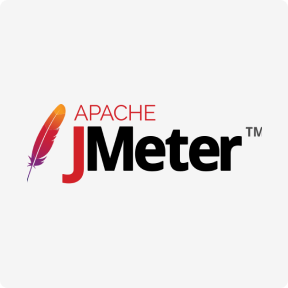Onion Architecture is comprised of multiple concentric layers interfacing with each other towards the core that represents the domain. The architecture does not focus on underlying technology or frameworks but the actual domain models. We can write business logic without concern about any of the implementation details. If we need anything from an external system or service, we can just create an interface for it and consume it. We do not have to worry about how it will be implemented.
The circles represent different layers of responsibility. In general, the deeper we dive, the closer we get to the domain and business rules. The outer circles represent mechanisms and the inner circles represent core domain logic. The outer layers depend on inner layers and the inner layers are completely unaware of outer circles.
Unfolding infrastructure in the Onion architecture
With Onion Architecture, the game-changer is that the Domain Layer (Entities and Validation Rules that are common to the business case ) is at the Core of the Entire Application. In this approach, we can see that all the Layers are dependent only on the Core Layers. Let’s look at one of the most popular Architecture in ASP.NET Core Applications. Here is a simple diagrammatic representation of a variation of the N-Layer Architecture.

This might be the way to reconcile between the ‘architecture purists’ and poor developers who just want to get the shit done. Such as Spring has grown as DI framework/IoC container (and then suddenly grown into swiss knife of java world but who cares). RxJava is designed to account for the reactive programming. Ports and adapters do not care about the inner structure of your application. So, this article defines only the fact that every single external boundary is referencing and application instead of application referencing external boundaries.
How to structure an Onion project
In fact, I’d say that the way Onion does it is probably the most common way that business domain software architectures are expressed nowadays. I’d have to go all the way back to Winforms or ASP.NET (both of which use code-behind extensively) to find an architecture that looks more like what this author calls «Traditional Layered.» Cell walls in plants are rigid, compared to other organisms. The cellulose present in the cell walls forms clearly defined tiles.
- Onion Architecture is a software architectural pattern that promotes a modular and loosely coupled design, focusing on separation of concerns and maintainability.
- It basically has the models/entities, Exception, validation rules, Settings, and anything that is quite common throughout the solution.
- Then we saw how the Service layer was created, where we are encapsulating our business logic.
- The Application Layer is the second most inner layer of the architecture.
- Therefore what we do is that we create interfaces in the Application Layer and these interfaces get implemented in the external layers.
- We moved all of the important business logic into the Service layer.
In this Letter, we investigated the size evolution of onion structure estimated by light scattering data with a nonlinear least-squares curve fitting method. The time evolution of onion size showed a good agreement with a stretched exponential function. The formation process of onion structure is briefly discussed from the viewpoint of the physical meaning of fitting parameters based on the integral transformation method. The Service layer holds interfaces with common operations, such as Add, Save, Edit, and Delete. Also, this layer is used to communicate between the UI layer and repository layer.
Presentation Layer:
Domain and Application Layer will be at the center of the design. To clearly understand the advantages of Onion Architecture in ASP.NET Core Applications, we will need to study the issues with N Layer Architecture. It is one of the most commonly used Solution Architectures amongst .NET developers. When working with Scrum, you will probably want to break the development of the software into different tasks, so it can be done by different people. This anti pattern has a lot of problems which are well described in Fowler’s article.

It just contains data, and is used only in this use case as a return value. For example, let’s say you are developing a banking system. Then, you are implementing a use case which lets the user check her or his account balance.
The Architecture of a Modern Startup
The onion plant has a fan of hollow, bluish-green leaves and its bulb at the base of the plant begins to swell when a certain day-length is reached. The bulbs are composed of shortened, compressed, underground stems surrounded by fleshy onion structure modified scale (leaves) that envelop a central bud at the tip of the stem. In the autumn (or in spring, in the case of overwintering onions), the foliage dies down and the outer layers of the bulb become more dry and brittle.
By doing this, we can ensure that our asynchronous calls that use the CancellationToken will always work. These are just some of the examples of what we could define in the Domain layer. We have to realize that everything is a tradeoff in software engineering. As our ApplicationDbContext is configured, let’s generate the migrations and ultimately create a Database using Ef Core Tools – Code First Approach. Now add a Product Class that inherits the Id from the BaseEntity.
Presentation Layer
Here, for simplicity, we just have two layers in the Application Core. This layer should interact with the Application Core services using the abstractions. A way of structuring your code for a long-life application with low maintenance costs.
However, there are still a couple of things to take care of. Great, we have seen how to implement the Presentation layer. If you’re interested in learning more about how to implement global exception handling, be sure to take a look at Global Error Handling in ASP.NET Core Web API. Now, let’s look at some of the custom exceptions that we have inside the Exceptions folder. Notice that we are setting the CancellationToken argument as an optional value, and giving it the default value. With this approach, if we don’t provide an actual CancellationToken value a CancellationToken.None will be provided for us.
Start by modeling the database
I hope this article helps you to develop proper coding discipline across the team and justify the necessity of additional interfaces for functions, related to application boundaries. From there, I came up to the conclusion that for the language patches I don’t want to extract implementations to the outer circle of the onion because it harms more than helps. I don’t want to define interfaces either as these items have no particular reason for change. The quick essence of that chapter is given in the Mark’s article. This article also nicely aligns layered, onion, and ports and adapters architectures, so i recommend you to read it before proceeding with current article. One of such choices is the decision about the code, highly reused by whole application including the domain objects.
